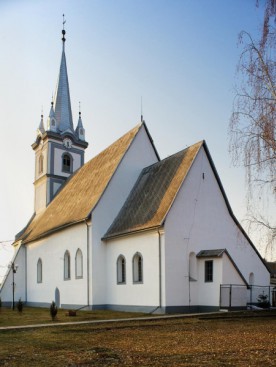The Calvinist Church –TiachivThe name of Tiachiv appeared in records for the first time in 1308. Its inhabitants were primarily salt miners. Charles I conferred royal privileges onto the settlement in 1329. Although the township had been until the end of the Middle Ages one of the five royal free-towns of Máramaros county, it was annexed later to the Khust estate. A three-storey tower dominates the western frontispiece of the church; the nave has a rectangular, while the sanctuary connected to it a square base. The sacristy is on the northern side of the latter. On the southern wall of the sanctuary, one can see two large windows, spanned by semi-circular arches; while, two more windows divide the eastern wall. Archivolts span the latter ones. The portal opened through the southern wall of the nave is spanned by a lancet arch. Inside the church, a semi-circular or round arch is the chancel arch separating the chancel from the nave. On the western side, a large gallery supports the organ built in 1853. The nave’s painted wooden coffered ceiling was made in 1748. Most of the panels are decorated with ornamental motifs; however, the artist painted figural representations or inscriptions on some of them. The church was built in several successive stages. The latest addition is the tower stemming from 1810. The extension of the nave took place earlier, probably in 1748. Most probably, the church had been built at the end of the 13th or the beginning of the 14th century, when the settlement flourished being supported through official royal policies. |















